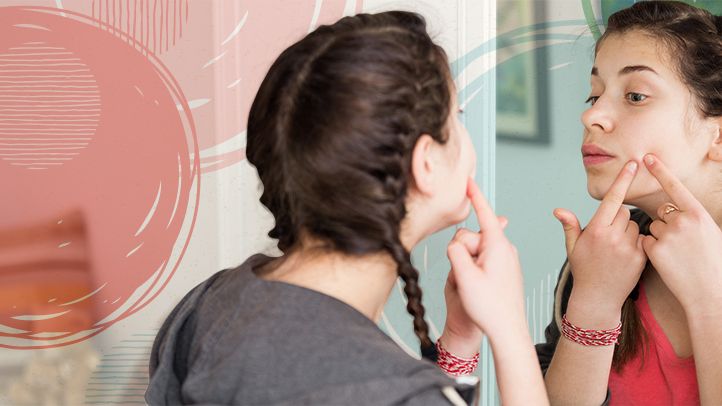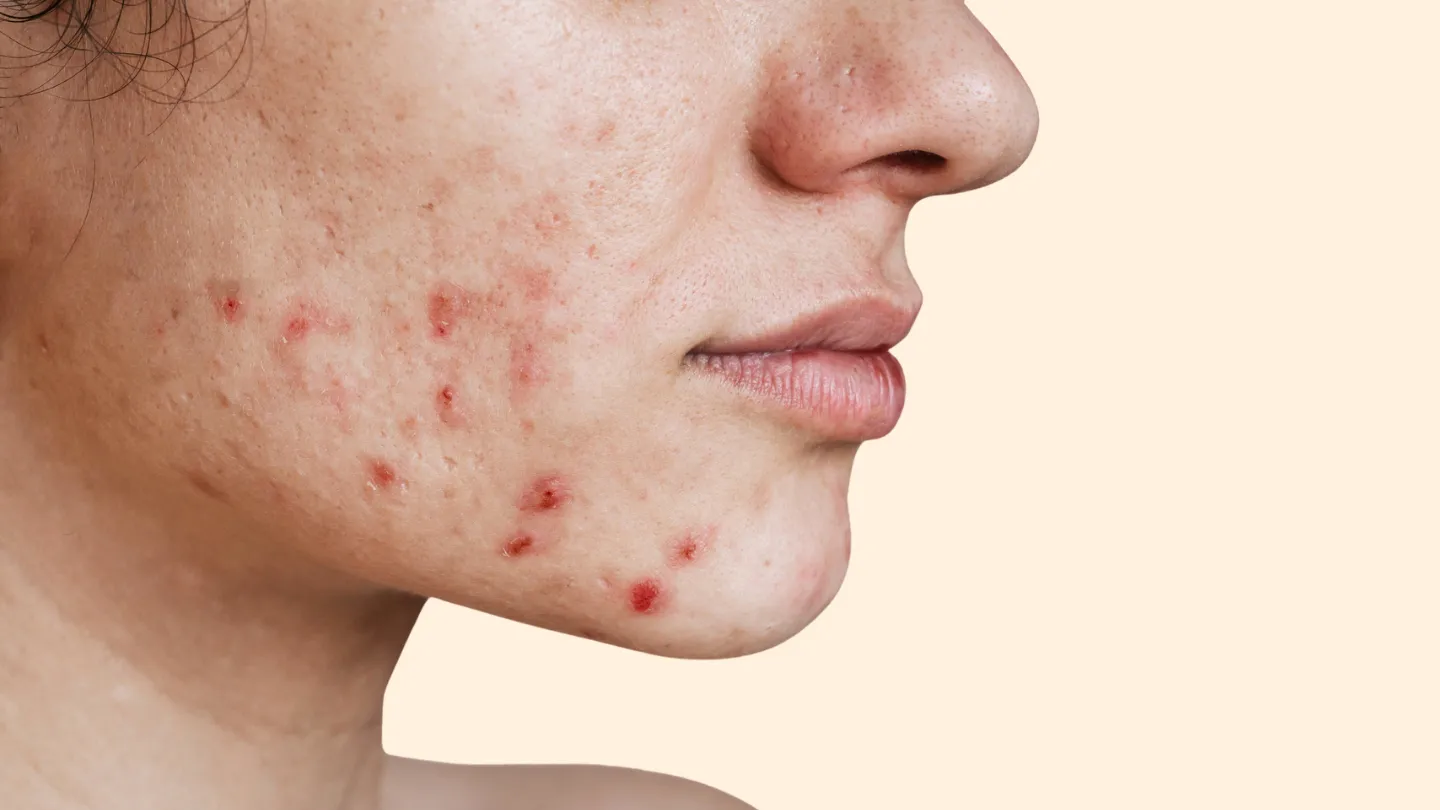Understanding the Causes of Tiny Bumps on the Face
Waking up to find tiny white or red bumps on your face can be annoying and distressing. These small bumps often appear due to clogged pores or minor inflammation. Some common causes of tiny facial bumps include:
1. Acne
Acne occurs when dead skin cells, oil, and bacteria clog up your pores. This leads to whiteheads, blackheads or small red bumps called papules. Acne can flare up due to hormonal changes, diet, stress or unsuitable skincare products.
2. Allergic Reactions
Allergic reactions to skincare products, makeup or other topical items can also cause itchy red bumps. This is called contact dermatitis. Check if the bumps appear only on certain parts of your face to identify the irritant.
3. Keratosis Pilaris
Keratosis pilaris leads to the appearance of small bumpy spots on your cheeks, arms, thighs or buttocks. This occurs due to excess keratin blocking the hair follicles. While harmless, these bumps can feel abrasive.
8 Ways to Get Rid of Tiny Bumps on the Face Quickly
Getting rid of tiny pimple-like bumps on the face can be frustrating. However, there are several effective home remedies and over-the-counter treatments that can help banish these bumps fast!
1. Use a Salicylic Acid Cleanser
Washing your face with a gentle salicylic acid cleanser helps get rid of dead skin cells and oil. This helps unclog pores. Use this medicated face wash daily to prevent and treat inflamed bumps caused by acne.
2. Spot Treat with Benzoyl Peroxide
Benzoyl peroxide can have a remarkable effect on pimples. Available over-the-counter, benzoyl peroxide kills the bacteria inside clogged pores. Spot treat bumps with a 2.5% benzoyl peroxide gel. It works best overnight.
3. Apply Tea Tree Oil
Tea tree oil is a natural antibacterial ingredient that can help dry out tiny facial bumps quickly. Mix a few drops of tea tree oil with a teaspoon of witch hazel. Apply this solution directly onto bumps once or twice a day using a cotton ball.
4. Use an AHA Exfoliant
AHAs like glycolic, lactic and mandelic acid remove dead skin cells by exfoliation. This prevents pore blockage. Gently massage the face with an AHA exfoliant 2-3 times a week to banish tiny bumps caused by clogged pores.
5. Treat with Azelaic Acid
Studies show azelaic acid gel reduces acne and facial bumps by killing acne-causing bacteria. Available on prescription, apply a thin layer of azelaic acid gel onto your face twice daily. Avoid irritation by using only a pea-sized amount.
6. Moisturize Daily
Using oil-free, non-comedogenic moisturizers is vital for bump-free skin. Gels and lotions with hyaluronic acid, ceramides and glycerin hydrate without clogging pores. Apply water-based moisturizer after cleansing to prevent dryness and irritation.
7. Avoid Skin Irritants
Picking at bumps can cause infections. Avoid using irritating ingredients like alcohol, menthol, peppermint, eucalyptus oil and harsh scrubs on bumpy facial skin as these can make inflammation worse.
8. Protect Skin from the Sun
UV exposure can lead to tiny clusters of bumps called actinic keratoses. Shield your face daily with a broad-spectrum SPF 30 sunscreen labeled non-comedogenic to prevent sun damage and discomfort from bumpy skin.
When to Seek Medical Care for Facial Bumps
In most cases home treatment helps get rid of tiny white or red bumps on the face within a few days. However, consult your dermatologist if you notice:
- Severe, painful cystic bumps on face
- Bumps spreading across cheeks or jaws
- Bumps that worsen or cause scarring
- Pus-filled bumps surrounded by redness
- Very itchy or burning facial bumps
Seeking timely medical care prevents complication, scarring and prolounged discomfort from stubborn facial bumps.
How to Prevent Tiny Bumps on the Face
While annoying, facial bumps are often preventable. Here are smart tips to prevent tiny pimple-like bumps from marring your visage ever again:
1. Establish A Healthy Skincare Routine
Cleansing and moisturizing your face twice daily maintains a strong skin barrier. This keeps acne, allergens and pollutants from penetrating skin and causing bumps.
2. Remove Makeup Before Sleeping
Leaving makeup residue overnight is the easiest way to clog pores and wake up with bumps. Use micellar water or makeup remover wipes to take off every trace of makeup before bedtime.
3. Avoid Touching Your Face
Your hands transfer dirt and bacteria onto your face easily, eventually leading to bumps. Train yourself out of the habit of touching, picking or popping bumps to avoid infections.
4. Stay Hydrated
Drink at least 2 to 3 liters of fluids like water, herbal tea, juices and broths daily. Staying hydrated is vital for flushing out toxins so skin remains clear.
5. Take Supplements
Vitamin A, zinc, omega fatty acid and probiotic supplements benefit your skin and prevent acne bumps. However, check with your doctor before starting any new supplement.
Banishing every tiny bump off your face quickly may seem difficult. But being gentle and consistent with home remedies and over-the-counter treatments helps most bumps disappear faster without complications.
FAQs
What causes tiny white bumps on my face overnight?
White bumps that seem to appear overnight are usually a symptom of mild acne. The bumps form when a pore gets clogged with oil, dirt and dead skin cells. Sleeping with makeup on and not properly cleansing the face before bedtime can also lead to white bumps.
How can I get rid of tiny facial bumps fast at home?
Gentle home remedies like salicylic acid cleansers, tea tree oil, AHAs, benzoyl peroxide spot treatments and non-comedogenic moisturizers help get rid of most facial bumps within days. Avoid picking or popping the bumps as this causes further irritation.
Is there a skincare ingredient that helps prevent bumps on face?
Two excellent ingredients that prevent clogged pores and bumps on the face are salicylic acid and retinol. Salicylic acid exfoliates dead skin cells inside pores while retinol boosts collagen and speeds up cell turnover to reveal smooth skin.
When should I see a dermatologist for facial bumps treatment?
See your dermatologist if the bumps are extremely itchy, painful and swollen or lead to pus formation. Also consult if they spread rapidly across your cheeks or jawline or form thick, hard deposits under the skin, as this signifies infection.
Disclaimer: This article is for informational purposes only and does not constitute medical advice. Always consult with a healthcare professional before starting any new treatment regimen.
Related Coverage
Fungal acne is a skin condition caused by yeast overgrowth on the face. Learn what causes it, symptoms to spot, and effective anti-fungal treatment methods....
Pomade acne is a common struggle for many. Learn what causes pomade breakouts and get expert solutions to treat and prevent pimples from pomade residue buildup....
Keratosis pilaris bumps may be tempting to pop but can lead to scarring, infection, and more inflammation. Here's how to safely treat KP bumps....
The surface of healthy natural nails should be smooth, evenly shaped, and uniform in thickness and color. Look for a clear surface with a pale lunula and pink nail bed....
Skin popping illegal drugs leads to distinct track mark scarring plus infections and overdose risks. But professional treatment can restore hope and skin health....
Curious about the best way to reduce wrinkles? Discover how Arazlo, with its key ingredient tazarotene, helps improve skin texture and smooth out fine lines while tackling acne....
Butt acne is a common nuisance. Learn what causes pimples and bumps on your backside and how to clear them up safely and effectively....
Cucumbers often have small bumps or spines on their skin formed by natural trichomes. Learn why cucumbers have bumps, if they're safe to eat, and how to remove them....
Learn what causes lip zits and how to get rid of them fast using warm compresses, OTC creams, antibiotics, lifestyle changes and dermatologist treatments....
Learn what causes clogged pores on feet and how to unclog them. Discover home remedies, medical treatments and key prevention tips for clearing foot blackheads....







